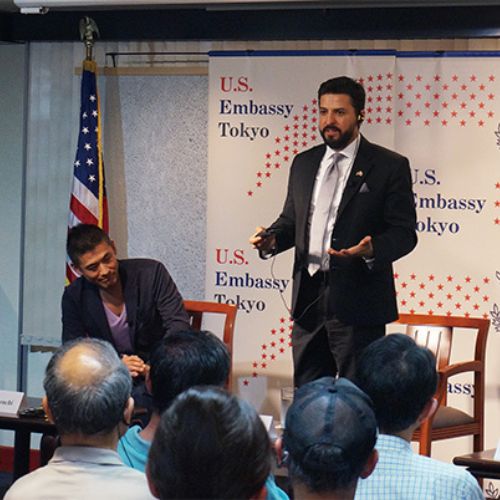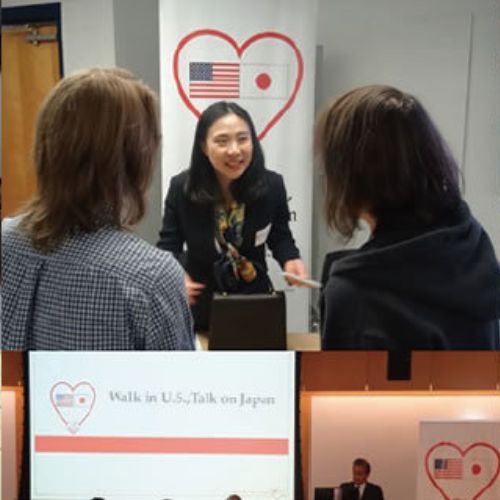In years past, many scholars criticized Japan for being a “reactive state” incapable of proactive or strategic action. I argued in my book Japan’s Reluctant Realism (2001) that the rise of Chinese power was propelling Japan away from an earlier era of “checkbook diplomacy” towards a foreign policy strategy based on more proactive balance-of-power logic. At the time, I was very much in the minority among Japan scholars in the United States in making that point. Today there is a much broader consensus among scholars and diplomats that Japan is, in fact, attempting to lead in the development of an open and rules based order in the Indo-Pacific region. Now the debate is focused on whether Japan’s grand strategy is effective.

Dr. Michael J. Green
Senior Vice President for Asia and Japan Chair at the Center for Strategic and International Studies (CSIS) and Director of Asian Studies and Chair in Modern and Contemporary Japanese Politics and Foreign Policy at Georgetown University. He was Special Assistant to President George W. Bush and Senior Director for Asia on the NSC staff.
Is the “Free and Open Indo-Pacific Strategy” Japan’s grand strategy?
What is “grand strategy”? It is the integration of all instruments of national power to shape a more favorable external environment for peace and prosperity. These comprehensive instruments of power are diplomatic, informational, military and economic. Successful grand strategies are most important in peacetime, since war may be considered the failure of strategy. Sometimes states pursue grand strategies without any explicit announcement. Sometimes states ceremonially announce grand strategies, but fail to actually execute them. Prime Minister Abe Shinzo’s government has announced the “Free and Open Indo-Pacific.” Is it a grand strategy? And will it be effectively executed?
I believe the “Free and Open Indo-Pacific” flows from a strategic worldview in Japan, even if it does not spell-out every detail of the national objectives and instruments of power to be employed. That worldview is that Japan benefits from a regional order that is based on rule-of-law; transparency; openness; high quality rules for trade, investment and infrastructure; and the prevention of coercive actions against smaller states. That is a worldview that is strongly shared by the United States, as one can easily discern from the Trump administration’s decision to adopt the same label of “Free and Open Indo-Pacific” for its strategy towards the region. One can rightly criticize the Trump administration’s withdrawal from TPP as undermining that vision, but the fact remains that a strong majority in the Congress and the American public support free trade, strong alliances, and expanded American engagement in Asia. Australia and India also explicitly identify with the “Free and Open Indo-Pacific” framework, as the formation of a “Quad” forum among these four maritime democracies demonstrates. Middle and smaller powers ranging from Korea to Indonesia and Sri Lanka would strongly support this vision as well, though these powers are more vulnerable to Chinese pressure and careful about appearing to align against Beijing. Indeed, both Tokyo and Washington will have to accept that not all governments will openly sign on to the “Free and Open Indo-Pacific” strategy even though they will privately want the major maritime democracies to stand together for an open and rules based regional order—and most importantly, to dissuade Beijing from thinking it can change that order based on coercion.
The “Free and Open Indo-Pacific Strategy” for investment and sustainable economic development in the region
Japan’s version of the Free and Open Indo-Pacific has one strength over the Trump administration’s version, and that is the recognition that all the nations encompassed in the arc from Africa to the Western Pacific desire investment and sustainable economic development. Indeed, most are more interested in that aspect than open competition with China, as much as they each worry about Beijing using its “Belt and Road” initiative to establish a more hegemonic position that might limit their own freedom of action. The U.S.-Japan-Australia-India Quad has begun taking up the theme of “quality infrastructure,” which suggests that Washington has realized this shortcoming in its own formulation. Japan provides far more government-supported infrastructure assistance through yen loans that the United States does through its official lending, but together the United States and Japan can bring a great deal to the table through cooperation with the Asia Development Bank and the World Bank. The Japanese decision to cooperate with China on the Belt and Road was wise, since this will give Tokyo some opportunity to hold China to higher levels of transparency and accountability through cooperation rather than competition. Japan and other like-minded states will have more leverage in this approach if there are parallel efforts to expand support for infrastructure investment by the developed countries and the international institutions.
The role of values of Japanese and American strategies in the Indo-Pacific region
There is another dimension to shaping the direction and impact of the Belt and Road that Tokyo and Washington must both take more seriously—and that is the role of values in our respective “Free and Open Indo-Pacific” strategies. The goal should not be to force the diverse political systems across Africa, South Asia and East Asia into one model of liberal democracy. On the other hand, the United States and Japan should not ignore governance issues within countries so that we can “keep up” with China. The reason is simple: states that have greater transparency, freedom of press, legislative accountability, and rule-of-law will be more resistant to bribery, coercion and subjugation and will insist on higher quality infrastructure. Our goal is not to stop China’s infrastructure investment, but instead to keep healthy pressure on Beijing to conform with established international norms. That pressure will only be effective if it also comes from within recipient nations.
I would conclude by arguing therefore that Japan’s “Free and Open Indo Pacific” framework is an important element of grand strategy and that it has a good chance of being effective, if we define the goal as shaping the region’s response to China’s rise rather than somehow trying to “contain” China. The international relations of the Indo-Asia-Pacific are a contradictory mix of cooperation and competition, and the United States and Japan will need nuanced approaches that recognize both aspects of the problem and leverage our strong alliance and our partnerships with like-minded states.





























